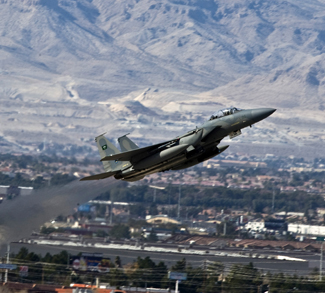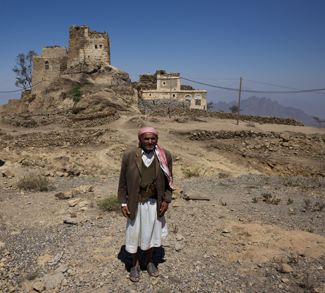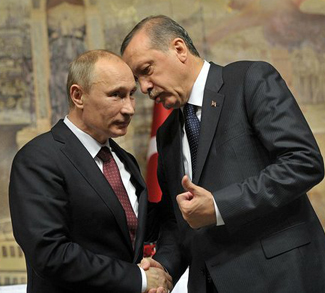The recently brokered ceasefire between Israel and Hamas marks a crucial moment in the long-running conflict in Gaza. While it offers a temporary respite from violence, it fails to address the deep-rooted political and security issues at the heart of the dispute. The agreement unfolds in three phases, focusing on hostage and prisoner exchanges, the return of displaced civilians, and the eventual transfer of Gaza’s governance to an unspecified authority. However, the absence of a clear post-war strategy raises concerns about the ceasefire’s sustainability. Political instability within Israel, the broader regional power dynamics, and the lack of a governance framework in Gaza could ultimately lead to renewed violence and even early elections in Israel.
Breaking Down the Ceasefire Agreement
On January 15, Israel and Hamas reached a ceasefire agreement following 15 months of intense fighting. The deal introduces a phased approach, designed to gradually de-escalate tensions while addressing humanitarian concerns and political realities on both sides:
Phase One: Israeli hostages and Palestinian prisoners will be exchanged, and Israeli forces will redeploy from central Gaza to the buffer zone along the border. This phase aims to build initial trust between the parties while immediately addressing the humanitarian crisis by allowing aid to flow more freely into Gaza. Additionally, it seeks to reduce active combat operations, providing a temporary period of stability to war-weary populations on both sides.
Phase Two: Displaced civilians will return to northern Gaza, and Israeli troops will withdraw further, though not completely. The partial withdrawal signals a shift towards de-escalation, yet it stops short of a full retreat, reflecting Israel’s security concerns. During this phase, reconstruction efforts are expected to begin, though limited in scope due to ongoing uncertainty about long-term governance. This period may also see the deployment of international observers to monitor compliance and prevent flare-ups.
Final Phase: Hamas will release the remaining hostages, and Israel will transfer control of Gaza to a transitional authority yet to be determined. This is the most ambiguous and contentious phase, as no clear governance structure has been established. The question of who will govern Gaza remains unresolved, with competing proposals ranging from Palestinian Authority oversight to an internationally backed administrative body. Without a stable governing framework, this phase could become the biggest stumbling block, as both sides will likely resist ceding control without guarantees that their strategic interests are preserved.
Despite its structured approach, the agreement leaves several critical questions unanswered. The most pressing concern is who will govern Gaza post-conflict. Without a stable governing body and a clear security arrangement, the ceasefire could unravel, paving the way for renewed conflict. Additionally, the timeline for implementation remains fluid, increasing the risk of delays, disputes, or even outright breaches of the agreement. The potential for extremist factions to act as spoilers, seeking to derail the ceasefire for ideological or political gains, further complicates its long-term viability.
Shifting Dynamics on the Ground
The geopolitical landscape has shifted significantly since the collapse of the November 2023 ceasefire, reflecting a broader regional realignment. Over the past year, Israel has intensified its military operations, conducting extensive airstrikes and ground incursions aimed at crippling Hamas’ infrastructure and leadership. This has included targeted assassinations of high-ranking figures, such as Hezbollah leader Hassan Nasrallah and Hamas military chief Yahya Sinwar, both of whom played crucial roles in coordinating militant activities. The precision of these strikes has disrupted the organizational capacity of both groups, though it could also be argued that it has hardened resistance among the remaining operatives.
Beyond Gaza and Lebanon, the broader regional equation has also evolved. The overthrow of Syrian President Bashar al-Assad has introduced new uncertainties, with opposition factions vying for control and creating potential power vacuums that regional actors, such as Turkey and Israel, could exploit. The power shift in Syria further weakens the so-called “Axis of Resistance,” as Assad’s regime had long served as a conduit for Iranian arms shipments to Hezbollah and Hamas.
At home, Israel faces growing war fatigue, with increasing public dissent over the prolonged conflict. With over 405 Israeli soldiers killed and 94 hostages still unaccounted for, domestic pressure on Prime Minister Benjamin Netanyahu’s government has intensified. Many Israelis, particularly those from centrist and left-leaning political blocs, are calling for a definitive resolution rather than an open-ended military campaign. The economic toll has also been significant, as prolonged military operations have strained the national budget and disrupted daily life.
On the other side, Hamas has suffered substantial setbacks. Its once formidable rocket arsenal has been largely depleted, and relentless Israeli strikes have severely disrupted its command and control capabilities. While Hamas has attempted to replenish its ranks with new recruits, the loss of seasoned commanders has impaired its operational effectiveness. Additionally, mounting civilian casualties in Gaza have fueled humanitarian concerns, increasing international pressure for a long-term ceasefire.
These developments have pushed both sides toward negotiation, though with vastly different end goals. Israel aims to prevent a resurgence of Hamas’ military strength while avoiding a full-scale occupation of Gaza, whereas Hamas seeks to leverage negotiations to secure humanitarian relief and preserve its political influence. As the ceasefire takes effect, the shifting regional and domestic dynamics will determine whether it can hold or if renewed conflict is inevitable.
Political Fallout in Israel
The ceasefire deal is expected to pass in the Knesset with support from centrist opposition leaders like Benny Gantz and Yair Lapid, who see the agreement as a necessary step toward de-escalation, albeit an imperfect one. However, Netanyahu’s right-wing coalition remains deeply divided, with hardline factions opposing any deal that does not ensure Hamas’ total defeat. Finance Minister Bezalel Smotrich has been particularly vocal in his criticism, arguing that any compromise with Hamas legitimizes its continued influence in Gaza and undermines Israel’s long-term security. His stance reflects a broader ideological divide within the ruling coalition, where nationalist and security hardliners resist policies perceived as concessions to Palestinian factions.
While Smotrich has not explicitly threatened to exit the government, ongoing disagreements could further weaken Netanyahu’s fragile coalition. Key allies within the far-right camp are demanding stronger guarantees regarding future military operations, expansion of settlements, and an uncompromising stance against Hamas’ political re-emergence. If Netanyahu is unable to balance these competing pressures, internal fractures within the coalition could widen, making governance increasingly difficult. In an effort to maintain power, Netanyahu might make tactical political shifts, including forming temporary alliances with centrists or moderates to prevent his government from collapsing.
If Israel remains entangled in a low-intensity insurgency in Gaza, Netanyahu’s government will likely face increasing public dissatisfaction. Prolonged military engagement without clear objectives could lead to dwindling support, making early elections before 2027 a real possibility. Additionally, internal disputes over settlement expansion and religious exemptions from military service could further strain Netanyahu’s coalition, increasing the risk of political realignments.
Regional Ripple Effects
The ceasefire has implications beyond Israel and Hamas, influencing regional stability:
Hezbollah & Lebanon: With Hamas no longer actively engaged in combat, Hezbollah’s justification for military intervention in support of the Palestinians weakens. The ceasefire could also extend the Israel-Hezbollah truce beyond its scheduled January 26 expiration. However, tensions remain, as Israel continues intelligence and counter-militancy operations along the Lebanese border.
Houthi Attacks: Yemeni Houthi rebels have paused their attacks on Red Sea shipping but warned they would resume if Israel violates the ceasefire. However, ongoing naval operations by Western allies to protect trade routes and Israel’s renewed focus on the Houthi threat could prompt Sanaa to reconsider, potentially escalating regional conflict.
Egypt & Jordan: Both countries view the ceasefire as a means to prevent a humanitarian and refugee crisis from spilling over their borders. However, heightened tensions in the West Bank could destabilize Jordan, creating additional security concerns for Israel and affecting long-term diplomatic relations with regional actors.
The West Bank: A New Flashpoint?
As the situation in Gaza stabilizes, Israeli military focus is expected to shift toward the West Bank, where tensions have been steadily rising. The Netanyahu government could escalate operations against Palestinian militant groups, emboldened by anticipated policy shifts under the incoming US administration. Secretary of State nominee Marco Rubio has already signaled plans to lift Biden-era sanctions on Israeli settlers, potentially paving the way for further annexation and increased settlement activity, which could inflame Palestinian resentment and provoke violent clashes.
The West Bank has already witnessed a surge in Israeli military raids, settler violence, and retaliatory attacks by Palestinian militants. The expansion of Israeli settlements, combined with demolition orders targeting Palestinian homes, has exacerbated tensions and created a volatile environment. If Israel intensifies its military operations, it risks triggering a broader uprising similar to the past intifadas, further complicating the security landscape.
Jordan has explicitly warned that any attempt to push Palestinians into Jordan would be considered an act of war. Foreign Minister Ayman Safadi reiterated that this is a “red line” for Jordan, underscoring the high stakes involved. Jordan, which already hosts a significant Palestinian refugee population, fears that instability in the West Bank could lead to a new refugee crisis, straining its social and economic infrastructure. Increased violence in the West Bank could also lead to larger confrontations involving regional players, with Iran-backed militant factions potentially using the unrest as a pretext to launch attacks on Israel from neighboring countries.
Stalled Normalization in Saudi-Israel Relations
Despite US intentions to revive the Abraham Accords, the ceasefire is unlikely to accelerate Saudi-Israeli normalization. Riyadh has consistently maintained that normalization with Israel is conditional upon a credible path toward Palestinian statehood—an issue that remains a major sticking point. Netanyahu’s government has staunchly opposed any concessions toward a two-state solution, further dampening prospects for diplomatic breakthroughs.
Additionally, Saudi Arabia has been under increasing domestic and regional pressure to align its policies with the broader Arab consensus, which remains critical of Israel’s military actions in Gaza. The significant civilian toll from the conflict has reinforced anti-Israel sentiment among the Saudi public and within the broader Muslim world, making normalization politically risky for Crown Prince Mohammed bin Salman. Moreover, Riyadh remains cautious about the US role in brokering a deal, as shifting American administrations have produced inconsistent policies on Middle East peace efforts.
While backchannel diplomatic and economic engagements continue, full normalization remains elusive. Economic partnerships, particularly in technology and trade, may see incremental progress, but formal diplomatic ties are unlikely unless there is a substantial shift in Israel’s approach toward Palestinian governance and territorial disputes.
A Fragile Ceasefire
The biggest challenge for the ceasefire lies in its later phases, which require Israel to withdraw its forces and facilitate Gaza’s transition to a new governing authority. Given Tel Aviv’s reluctance to create a security vacuum, Israel may delay or avoid a full withdrawal, provoking Hamas into resuming hostilities.
If fighting resumes, the risk of a broader regional escalation increases. Iran could make efforts to re-engage with Hamas, Hezbollah could ramp up its attacks, and a more hawkish US administration might take military action against Iran. These scenarios would deepen instability and make a lasting resolution even harder to achieve. Additionally, the involvement of other regional players, such as Egypt and Turkey, could further complicate diplomatic efforts, as both nations have vested interests in Gaza’s future. Any misstep in managing the ceasefire’s fragile conditions could trigger a cascading effect, drawing multiple actors into renewed conflict.




